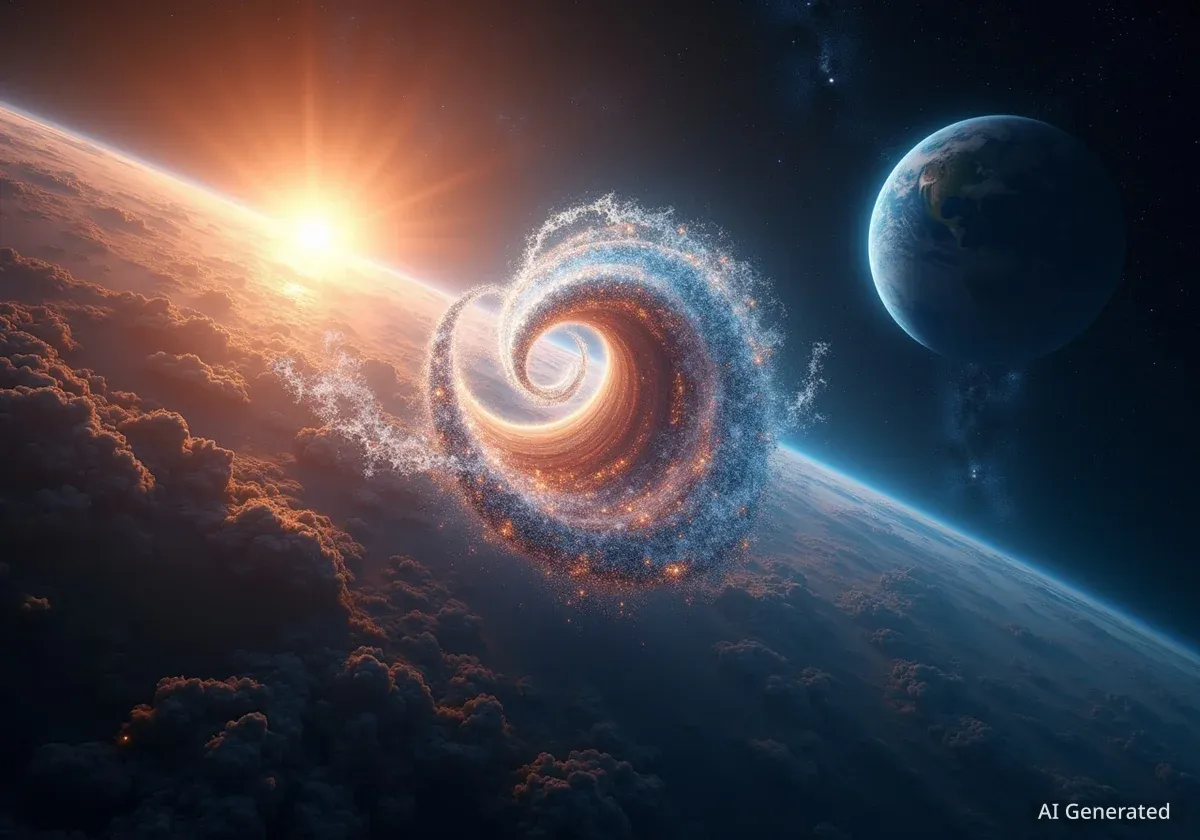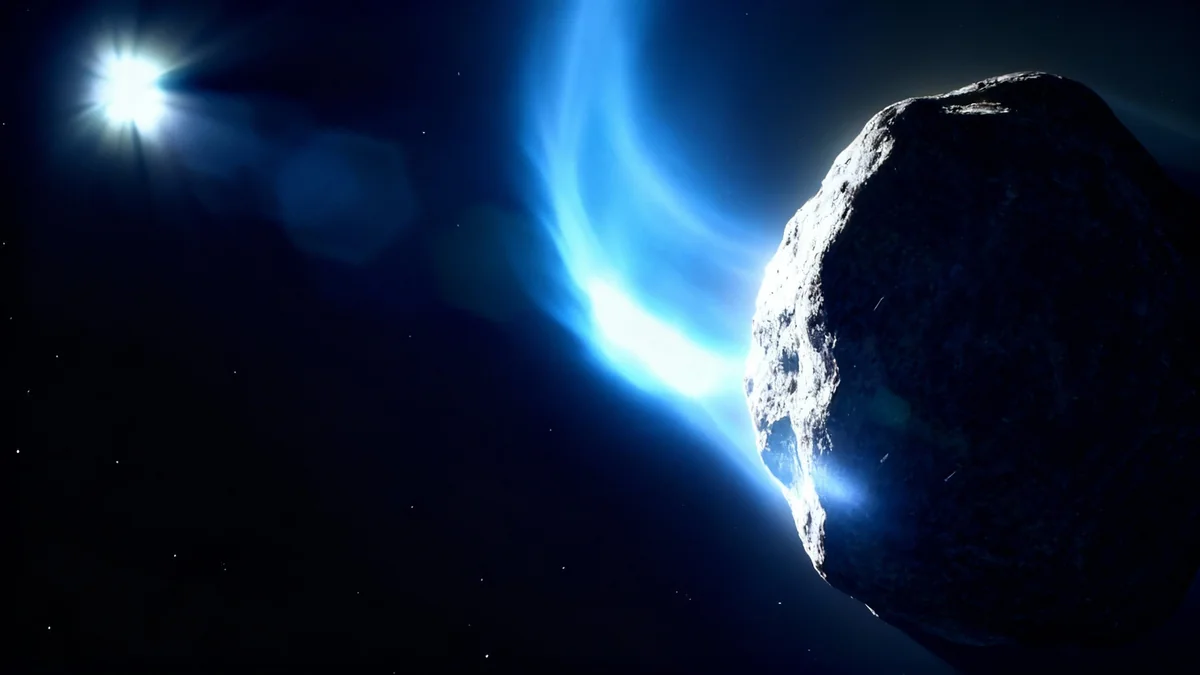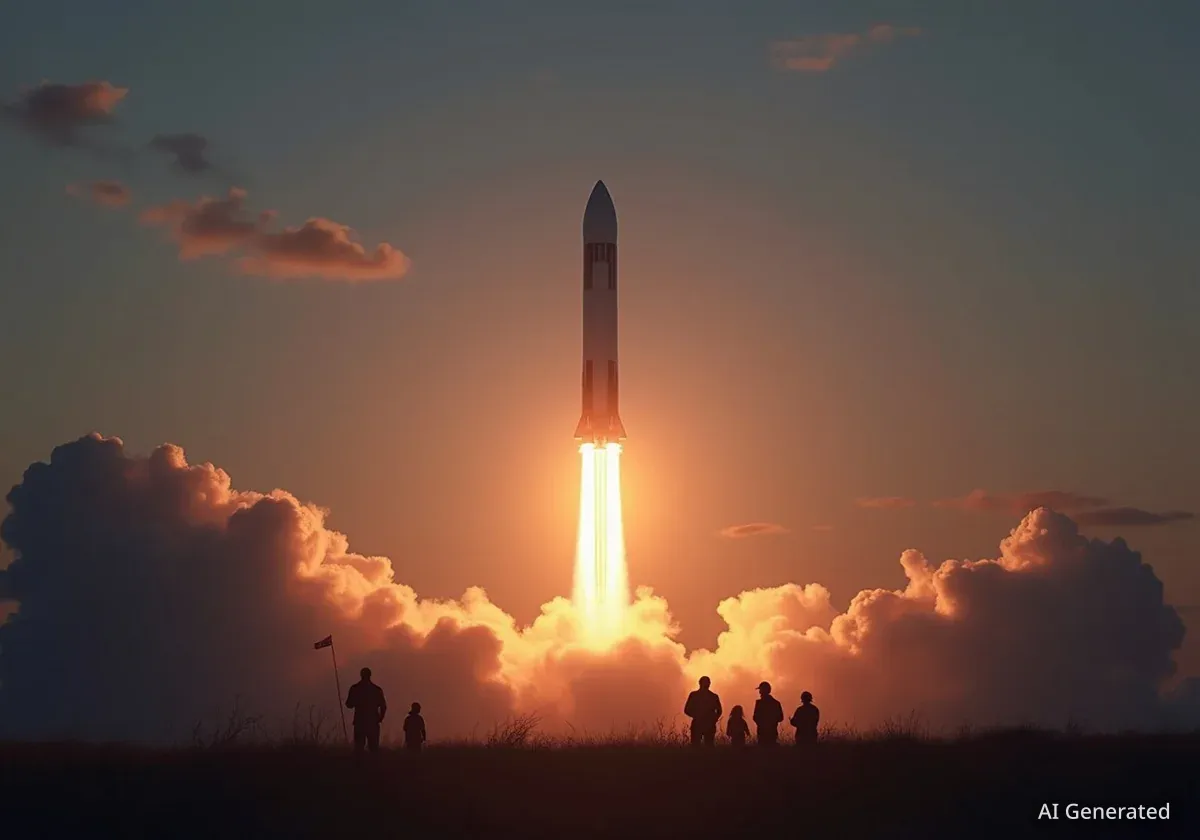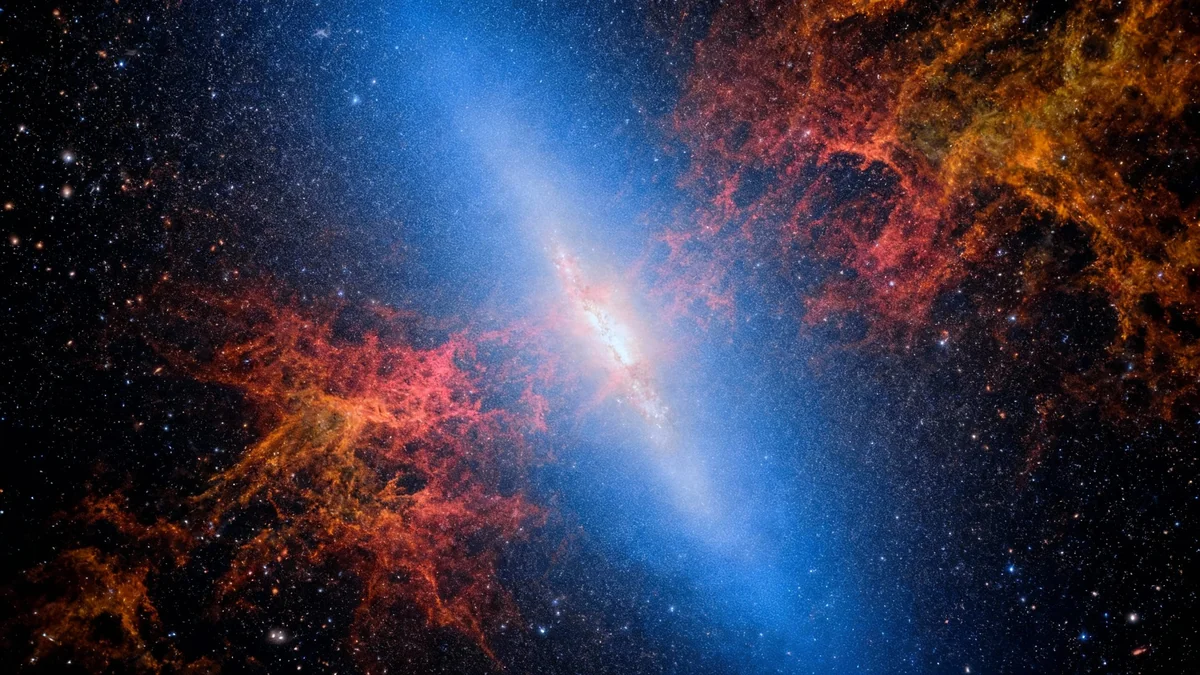New research from the University of Michigan has revealed that tornado-like magnetic structures, known as flux ropes, can form in the space between the Sun and Earth. Published in The Astrophysical Journal, the study used advanced computer simulations to show these phenomena are generated when solar eruptions collide with slower-moving solar wind, creating a previously underestimated source of potentially damaging space weather.
These findings help explain why geomagnetic storms sometimes impact Earth even when major solar events are not predicted, suggesting a new class of space weather that originates far from the Sun.
Key Takeaways
- Researchers identified that magnetic vortices, or flux ropes, can form independently in interplanetary space.
- These structures are created when fast-moving coronal mass ejections (CMEs) strike the slower solar wind.
- Standard space weather simulations were too low-resolution to detect these smaller, localized events.
- A new, high-resolution simulation model confirmed their formation, strength, and persistence, showing they are powerful enough to trigger geomagnetic storms on Earth.
The Mystery of Unpredicted Storms
For years, space weather experts have worked to predict geomagnetic storms, which are disturbances in Earth's magnetic field. These storms are known for producing beautiful auroras but can also pose a significant threat to modern technology. They can disrupt power grids, damage satellites, and interfere with communication systems.
Most powerful geomagnetic storms are caused by interplanetary coronal mass ejections (CMEs). These are massive eruptions of charged particles and magnetic fields from the Sun's surface, traveling at incredible speeds.
High-Speed Ejections
A CME can travel at speeds approaching 1,800 miles per second (2,897 kilometers per second). According to the original research authors, a single CME can move a mass of material equivalent to all the Great Lakes across the United States in under two seconds.
However, scientists faced a puzzle. In the summer of 2023, a space weather expert on the research team noted that geomagnetic storms were sometimes recorded on Earth during periods when no CMEs were forecast to arrive. This suggested another, unseen source of space weather was at play.
The leading hypothesis was that smaller disruptive events might be forming in the vast space between the Sun and Earth, rather than originating directly from solar eruptions. These suspected events were magnetic flux ropes—bundles of magnetic fields twisted together like a rope.
A Limitation in Space Weather Forecasting
Identifying these smaller flux ropes proved to be a significant challenge. The primary tool for forecasting space weather is computer simulation, but existing models were not designed to see such small-scale phenomena.
These are known as global simulations, which model the entire space from the Sun to the planets. To make such a large-scale simulation computationally possible, researchers treat the streams of charged particles as a fluid and divide the space into massive cubes, often 1 million miles (1.6 million kilometers) on each side.
The Scale of the Problem
The authors of the study compare the limitation of global simulations to trying to forecast a hurricane using a model that only shows global weather patterns. At that massive scale, a hurricane would be too small to resolve, and its effects would be missed entirely. Similarly, small flux ropes were invisible in standard space weather models.
The research team first examined older simulations, including data from a May 2024 solar eruption. They found faint hints of flux ropes forming where the CME collided with the slower solar wind ahead of it. However, these structures were too small for the simulation's grid and quickly dissipated within the model, leaving their origin and true nature unclear.
Developing a High-Resolution Model
To overcome this limitation, the University of Michigan team developed a new simulation with a much finer grid. Creating a high-resolution model of the entire solar system would be too computationally expensive. Instead, they cleverly increased the resolution only along the narrow path where the flux ropes were expected to travel.
This innovative approach improved the simulation's resolution by nearly 100 times compared to previous models. The new simulation could resolve features down to tens of thousands of miles, a massive leap in detail that made the previously invisible flux ropes clear.
"It was like watching a hurricane spawn a cluster of tornadoes," the researchers noted, describing the moment they saw the flux ropes form in their new model.
The team reran the simulation of the solar eruption event that had previously provided only a brief clue. The results were immediate and clear. The high-resolution view confirmed their hypothesis in stunning detail.
A New Source of Space Weather
The advanced simulation demonstrated that as the fast-moving CME slammed into the slower solar wind, it created a turbulent boundary. Within this region, a series of complex and powerful magnetic flux ropes—the 'space tornadoes'—were generated.
These were not weak, transient features. The modeled flux ropes were strong, organized, and persisted for much longer than expected. Most importantly, the simulations confirmed they contained enough magnetic energy to trigger a significant geomagnetic storm if they were to hit Earth.
Implications for Earth
This discovery confirms that dangerous space weather can originate locally in interplanetary space, not just from the Sun. This has major implications for space weather forecasting and planetary defense.
- Forecasting Gaps: Current space weather monitors might only register these flux ropes as a small, insignificant 'blip'.
- Infrastructure Risk: These events could cause unexpected disruptions to power grids and satellite operations.
- Need for New Tools: Reliably predicting these storms will require new monitoring systems, such as a constellation of multiple satellites.
The researchers are now working to simulate the direct impact of these tornado-like structures on Earth's magnetosphere and its technological infrastructure. The findings underscore the need for next-generation space missions, like the proposed Space Weather Investigation Frontier (SWIFT), which could provide the detailed, multi-point observations needed to see these events as they form and travel toward our planet.
While the discovery is exciting for advancing scientific understanding, it also serves as a warning. There are complex processes in our solar system that can affect life on Earth, and improving our ability to see them is critical for protecting our increasingly technology-dependent world.





